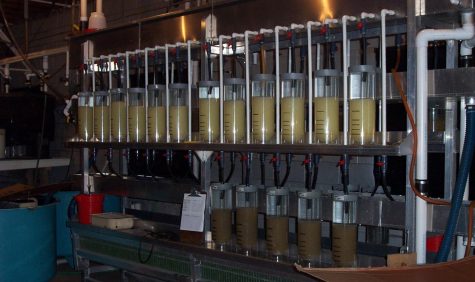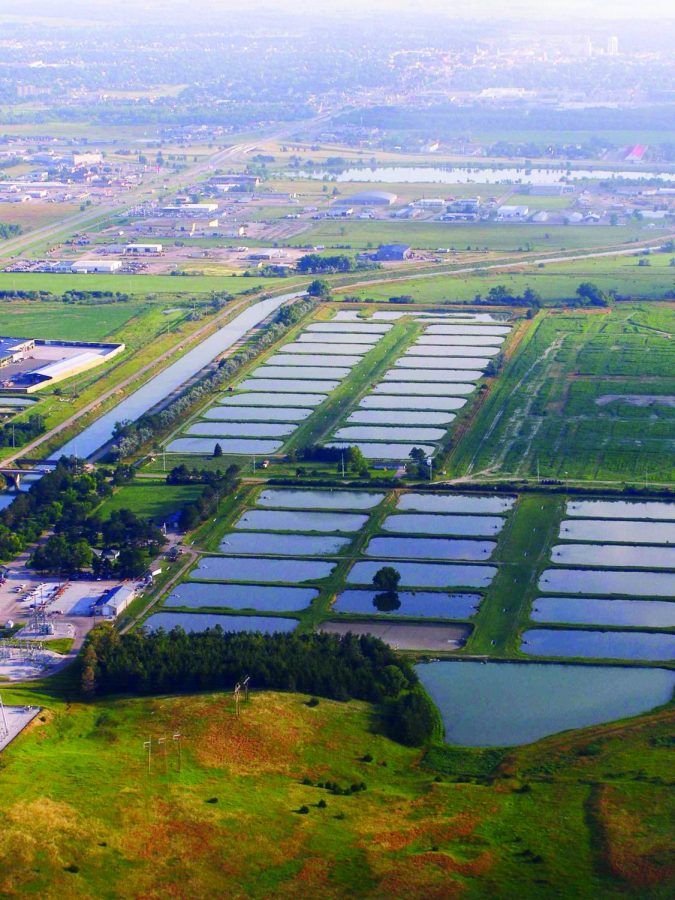Reeling in conservation
North Platte produces fewer roe this year, due to the pandemic.
Aerial view of the 43 production pods that sit just behind the hatcheries main building at the North Platte Fish Hatchery.
December 8, 2020
If you’ve caught a fish between Kimball and Omaha, there’s a strong chance that fish was born and raised in North Platte. “Walleye is the fish I catch the most in North Platte,” senior Kasch Morrison said.
When you drive east on State Farm Road, you may not realize that just beyond the road are 43 production ponds where many fish species are actively spawned. According to the Nebraska Game and Parks, the North Platte fish hatchery has been producing warm and cold-water fish species for the entire state for over 75 years.
The hatchery supplies bountiful populations for communities and recreational activities. They stock every public body of water in the state. “We raise walleye, sauger, white bass, northern pike, channel catfish, blue catfish, bass, smallmouth bass, blue gill,” hatchery manager Dirk Higgins said. “Basically, everything but trout.”

Hatcheries also play a crucial role in conservation. According to assistant hatchery manager Ted Bartles, over 77% of the state’s freshwater mussel population is in decline or near extinction. The hatchery raises dozens of species to reintroduce to natural waters.
Bartles said muscles are filter feeders and clean the waters for us. They play an important role in the nutrient cycle and have a niche within water environments. “It’s our job to protect them for future generations,” he said.
At the beginning of every year, a meeting is conducted that designates each hatchery’s fish. Biologists manage reservoirs within the state and take requests from surrounding counties.
Each region raises its native fish. Bartles said the North Platte hatchery raises 200,000-300,000 fish. Those fish are stocked from April to October.
This year, the COVID pandemic has greatly affected the fish hatchery’s production. They only hatched 4 million fish eggs. Bartles said they were only allowed to have two people one day to collect eggs. “We usually hatch about 20 [million] to 25 million eggs per year,” Higgins said the hatchery is normally open to the public and busiest around April during the hatching season. The tour includes a 40-minute walk through of the hatchery and an informational video.
However, due to COVID the hatchery is closed to the public.



